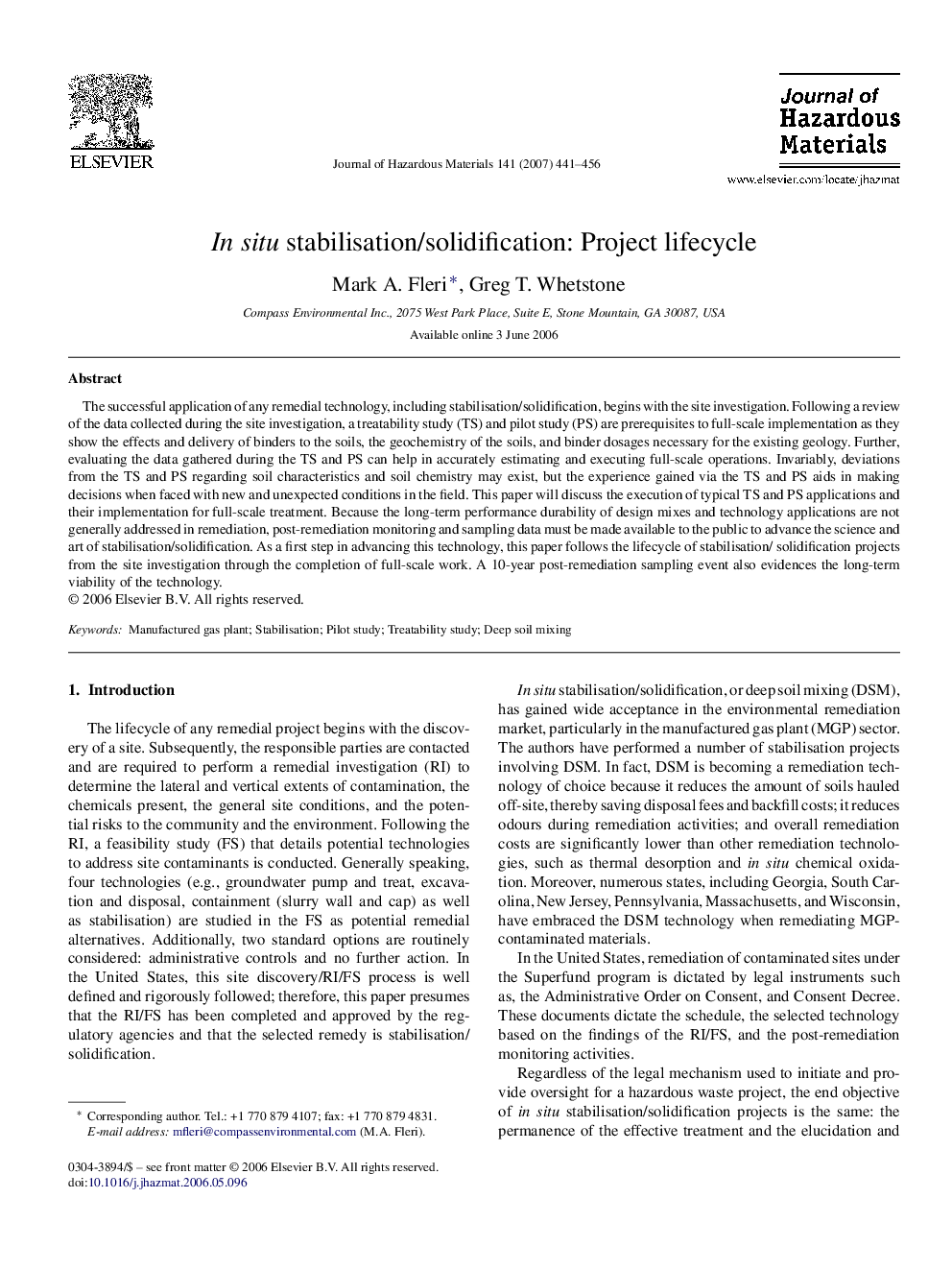| Article ID | Journal | Published Year | Pages | File Type |
|---|---|---|---|---|
| 584784 | Journal of Hazardous Materials | 2007 | 16 Pages |
Abstract
The successful application of any remedial technology, including stabilisation/solidification, begins with the site investigation. Following a review of the data collected during the site investigation, a treatability study (TS) and pilot study (PS) are prerequisites to full-scale implementation as they show the effects and delivery of binders to the soils, the geochemistry of the soils, and binder dosages necessary for the existing geology. Further, evaluating the data gathered during the TS and PS can help in accurately estimating and executing full-scale operations. Invariably, deviations from the TS and PS regarding soil characteristics and soil chemistry may exist, but the experience gained via the TS and PS aids in making decisions when faced with new and unexpected conditions in the field. This paper will discuss the execution of typical TS and PS applications and their implementation for full-scale treatment. Because the long-term performance durability of design mixes and technology applications are not generally addressed in remediation, post-remediation monitoring and sampling data must be made available to the public to advance the science and art of stabilisation/solidification. As a first step in advancing this technology, this paper follows the lifecycle of stabilisation/ solidification projects from the site investigation through the completion of full-scale work. A 10-year post-remediation sampling event also evidences the long-term viability of the technology.
Related Topics
Physical Sciences and Engineering
Chemical Engineering
Chemical Health and Safety
Authors
Mark A. Fleri, Greg T. Whetstone,
